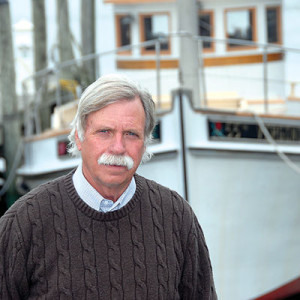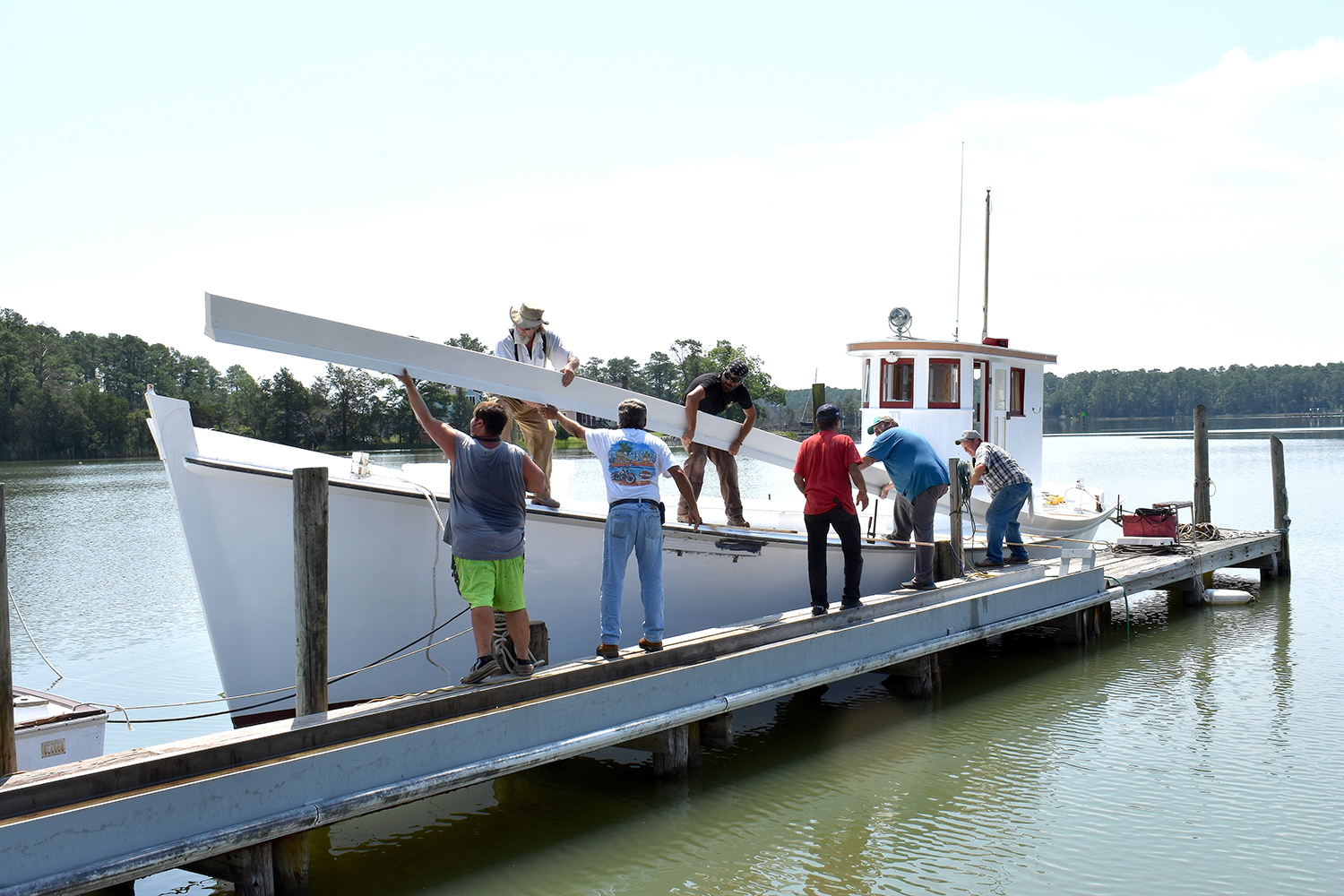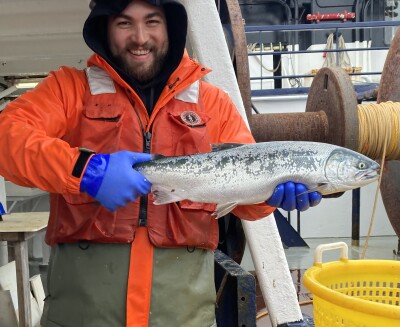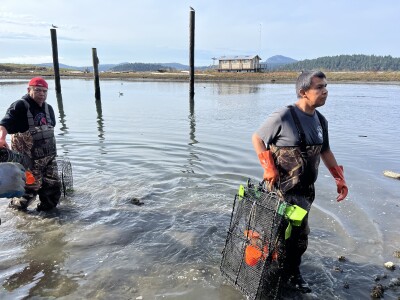Eric Hedberg of Rionholdt Once and Future Boats of Gywnns, Va., swears by PVC sheets and planks as a viable substitute to wood in boatbuilding and for maintenance of wood boats.
The Chesapeake Bay’s wooden boat commercial fishing fleet is aging, and quality boatbuilding wood is getting harder to find. Hedberg has persuaded some bay watermen to try PVC as a substitute to wood. He has built several 20-foot and over deadrise-style boats out of PVC sheets and planks.
“You can bury a boat made from PVC in the ground and dig it up 20 years later, and it would be as good as new,” says Hedberg. “PVC takes the issues of moisture and wood rot in wooden boats off the table.”
Hedberg says the material is also good for repair of older wooden boats. He recently installed a waist made from PVC sheets on the deck boat Peggy. The boat was built in 1925 to work in the bay’s pound net fishery.
The Peggy’s new 56-foot-long waist butts up to the stem and extends to the stern. Each waist is 3" x 4" at the base. The upright portion is 1.5" x 8" and it has a 3/4" x 2" PVC cap that fits over the top of the upright piece. The two waists are attached to the deck with 50 stainless steel bolts bolted into the wooden sides and deck of the Peggy.
“I built and installed the wooden waist that was on the Peggy myself 10 years ago with the best kiln dried fir we could find. It did not hold up,” says Hedberg. “They won’t be pulling this (PVC) waist off in 10 years.”
Hedberg says he has been using PVC to repair pilothouse roofs and window frames and other top work on older wooden workboats. “Watermen are having me use PVC in areas where there is not as much wear and tear,” he says. “I think as time goes on, they will see that PVC will hold up in areas where there is more stress.”
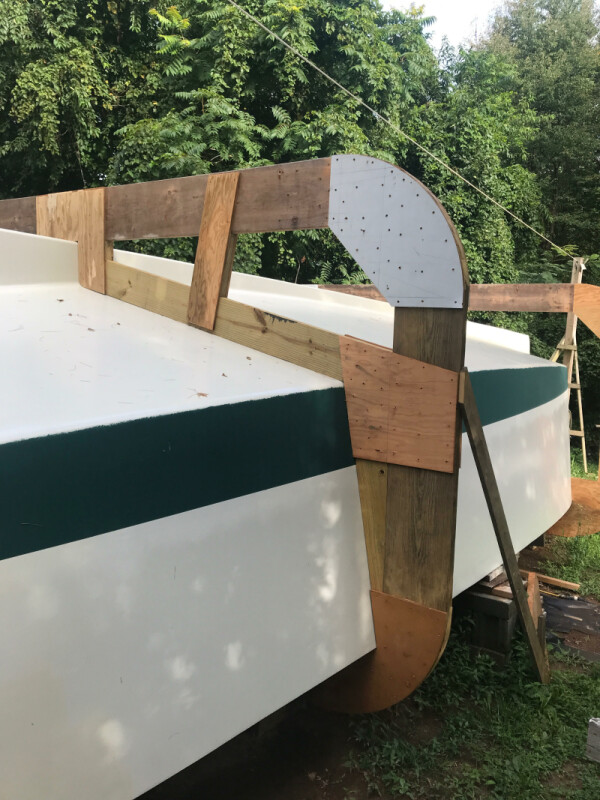
Moving up to Maryland, a six-year boatbuilding project at Mt. Airy, Md., is moving forward as the hull of a 46-foot deadrise deck boat, the John Swain, is complete and ready to turn over.
Back in 2015, Jim Drake and his wife, Brooke, let us know they were building a 46-foot Chesapeake Bay deck boat, also called buyboats. NF has been following the project in this column. (See ATY South, June 2019).
The boat is named for John Swain because of the couple’s admiration of the Chestertown, Md., boatbuilder. Swain is renowned as the main builder of the Sultana, which is a reproduction of a 1767 Boston-built merchant vessel that served for four years as the smallest schooner ever commissioned in the British Royal Navy.
Traditionally, Chesapeake Bay wooden deadrise hulls are built upside down and flipped right side up for the top work and decking to be installed. The challenge is to flip the boat over without damaging the hull. Drake has constructed an adaptation of a method used by Reuel B. Paker to flip hulls as described in Paker’s book “The New Cold-Molded Boatbuilding.”
Drake has installed two four-sided “turning frames” that encircle and wrap around the hull from sheer to sheer. The turning frames are made of three layers of 2" x 12" Douglas fir boards and joined at the corners with gussets and braces. The two frames are positioned so that each one roughly divides the mass of the hull into thirds, says Drake.
The frames will be cross-braced to each other to prevent spreading, and braced to the inside of the hull. The lifting side has chain lift points attached with through bolts at the lower corners of the frames, and a crane will be used to “gently” lift the 4.5-ton hull up and roll it over, he says.
Drake built all structural aspects of the vessel’s hull using fir planks laminated together to shape the keel, stem and other structural parts. Cold-molded plywood coated over with Dynel polyester epoxy and cloth was applied for sides and bottom. The boat will be powered by a Cummins diesel engine that Drake had in an old truck. The engine has been rebuilt and is ready to be installed, says Drake.
Several years ago, when attending the Sultana Downrigging and Tall Ships Festival in Chestertown, the Drakes were introduced to Chesapeake Bay deck boats. Brooke fell in love with the boats, and Jim set out to build her one. In their heyday, (1920s and ’30s) there were more than 3,000 deck boats on Chesapeake Bay. Today there are about 40 left — with a new one on the way!




